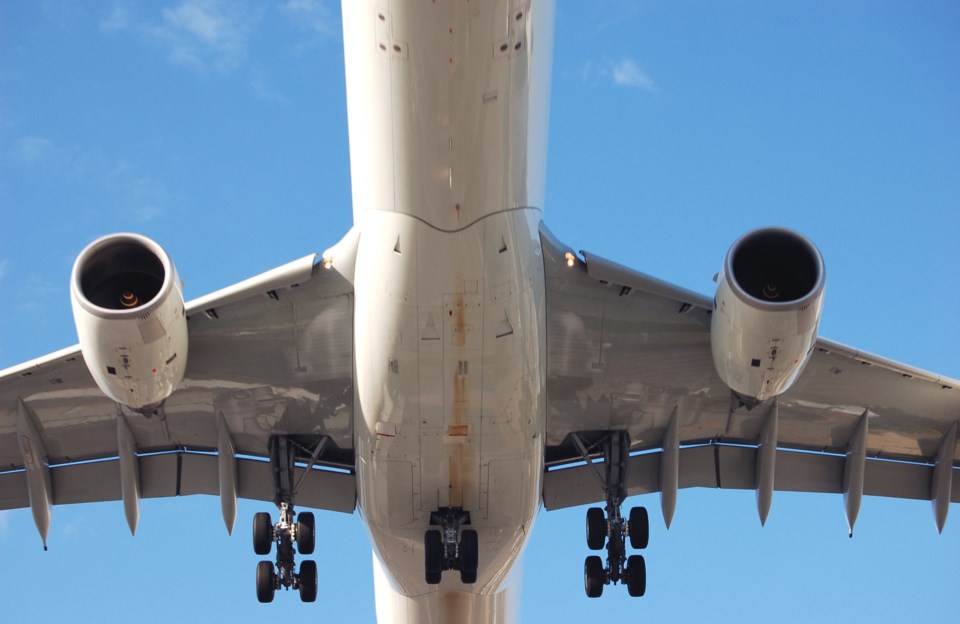With several recent plane accidents, including the most recent one at Toronto Pearson Airport, many travellers are understandably feeling uneasy. It’s unsettling to see images of emergency landings, smoke-filled cabins, and passengers jumping from a plane onto a snow-covered runway.
While these incidents make headlines, it's crucial to remember that flying remains the safest mode of transportation. More than 100,000 flights take off and land safely every single day worldwide. The odds of being in a fatal plane crash? 1 in 10 million - compared to 1 in 92 for a car accident.
That said, emergencies - though rare - can happen. And when they do, being prepared could make all the difference. From the moment you book your flight to the time you land, here’s how to fly safer and smarter.
1. Choosing the right seat can increase your safety
When booking your flight, consider where you sit.
- Aisle seats near the back of the plane have a slightly higher survival rate in crashes.
- Exit row seats allow for a quicker escape but require you to be physically capable of helping in an emergency.
- Seats near the wings offer a smoother ride during turbulence.
While seating choices don’t dramatically affect overall safety, having an awareness of your surroundings does.
2. The training behind every flight crew
Flight attendants are not just there to serve drinks - they are highly trained professionals. Every flight crew undergoes rigorous safety training, including:
- Firefighting and smoke evacuation techniques
- Emergency landing procedures
- Medical emergency response
- Evacuation drills under extreme conditions
They train for situations most of us will never encounter, so if an emergency happens, listen to them.
3. Pay attention to the safety briefing - it could save your life
We’ve all seen passengers tune out the safety demonstration. But in a real emergency, the difference between life and death can come down to what you remember.
During the briefing:
- Locate the nearest exit - and count how many rows away it is.
- Know how to put on an oxygen mask (it does not inflate immediately).
- Learn how to brace for impact—this has saved lives in crash landings.
- If you're in an exit row, read the instructions on how to open the door.
Don’t assume you’ll have time to figure it out later. Emergencies happen fast.
4. Takeoff and landing - the most critical phases of flight
Most aviation incidents occur during takeoff or landing, so these are the moments when you should be most alert.
- Always keep your shoes on—If you need to evacuate, you don’t want to be barefoot, stepping over sharp debris or burning hot pavement.
- Leave everything behind—TikTok can wait. Your bag is not worth your life.
- Buckle up and stay buckled—Even minor turbulence can cause injuries. If you need a seatbelt extender, just ask for one. They have them.
5. What you wear can impact your safety
Your clothing choices matter when flying—especially in an emergency.
-
Wear closed-toe shoes: We saw passengers jumping from the door of an upside-down plane onto a snow-covered runway. Imagine doing that in flip-flops or barefoot. Always wear sturdy, closed-toe shoes during takeoff and landing. If you take them off mid-flight, put them back on before landing.
-
Avoid synthetic fabrics: Leggings, lycra, and polyester might be comfortable, but they can melt into your skin in extreme heat. If there’s a fire or high temperatures in the cabin, natural fabrics like cotton or wool offer better protection.
-
Dress for survival: Think ahead—what if you had to evacuate in freezing temperatures or on burning asphalt? Wear long trousers and sleeves instead of shorts or tank tops. Layers are best, as temperatures can vary.
6. What to do in an emergency
If an emergency happens:
- Stay calm and move fast - Panic slows people down.
- Listen to the crew - They are trained for this.
- If the cabin fills with smoke, get low and go - Know your row count to the exit.
- Don’t stop for luggage - It’s replaceable. Your life isn’t.
Final thoughts: Flying Is safe, but being prepared matters
Yes, the recent aviation incidents are unsettling. But they don’t change the fact that flying remains the safest way to travel.
What we can control is how prepared we are. These small actions - choosing a smart seat, staying buckled, keeping your shoes on, and paying attention to safety briefings - can make a huge difference in an emergency.
Because at the end of the day, your life is worth more than your suitcase.
#SafeTravel #FlySmart #FlySafe #TravelTips #AviationSafety #FlyingSafe #LorrainesTravelTips
Want to travel with me? Head to my website Lorrainesimpson.com—I would love to have your company on one of my trips.
Upcoming trips include an almost sold-out Tanzania Safari with Zanzibar on August 5th, as well as a Japan trip later in August.
Follow me on Instagram @




